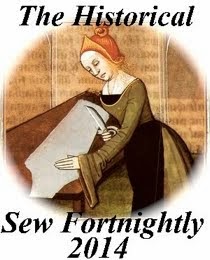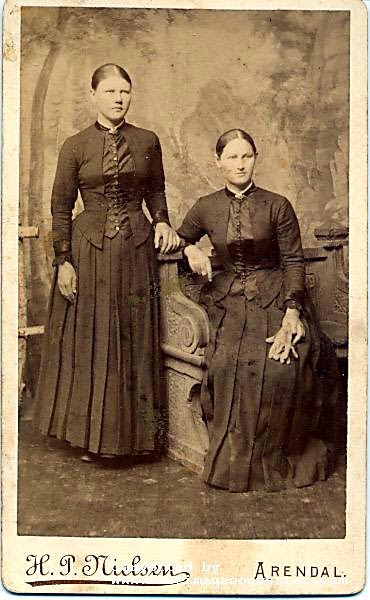 |
| "Gather Ye Rosebuds While Ye May" by Waterhouse. Wikiped |
 |
| "Sapphires" by Art Moore. www.ArtMagick.com |
Classical Grecian and Roman costume appeared more often in paintings than in real life during this period, because it consisted of richly-colored, sheer fabric, draped over the body in a toga or chiton style, often with the naked body visible beneath! In real life, an artistic woman would emulate the look of a toga or chiton using heavier, opaque fabric, or layer the drapery over a plain tunic for modesty. Most often, otherwise plain dresses were simply adorned with a swath of drapery over one shoulder, or around the hips to suggest the Grecian or Roman style.
 |
| "The Shrine" by Waterhouse. Wikipedia. |
 |
| "The Accolade" by Edmund Blair Leighton. |
Velvets, brocades, and other plush fabrics were seen in these gowns, ornamented only with a wide band of embroidery at the hem, functional buttons on the sleeves and/or down the center front, and jeweled girdles, belts or sashes at a low waist or high hip level. Center front or center back lacing panels also sometimes appeared.
 |
| "Isabella" by Millais. Wikipedia. |
Shoes were flat, like Grecian sandals or soft leather slippers with gently rounded toes. Hairstyles with this type of dress tended to imitate Classical Greek or Roman styles, with braids wound around the head with ribbons, or flowing down over the shoulders in waves,
sometimes loosely pinned back at the nape of the neck.
 |
| "Mariana" by Millais. Wikipedia. |
During the later manifestation of the Pre-Raphaelite Movement, in the Aesthetic and Art Nouveau Movements, inspired by the increased availability of Chinese, Japanese and other Oriental luxury goods, Liberty & Co. revived some antique Persian dyes and printing patterns, and popularized exotic Middle-Eastern and Asian designs. This inspired some women to wear authentic Japanese kimonos over plain silk tunics, as a variation of the style.
 |
| "Esther" by Millais. Wikipedia. |
Sources:
“The Aesthetic Dress Movement: Fashion History of Aesthetics” by Pauline Weston Thomas for Fashion-Era.com
“Morgan Le Fay” at the Pre-Raphaelite Online Resource
The Pre-Raphaelite Online Resource
“Pre-Raphaelite Ideals and Artistic Dress” by Consuelo Marie Rockliff-Stein
“Artistic Flair – Aesthetic Dress of the 1880s”
“Aesthetic Dress” Clothing and Fashion Encyclopedia
Reforming Women’s Fashion, 1850 – 1920: Politics, Health, and Art by Patricia A. Cunningham





















No comments:
Post a Comment